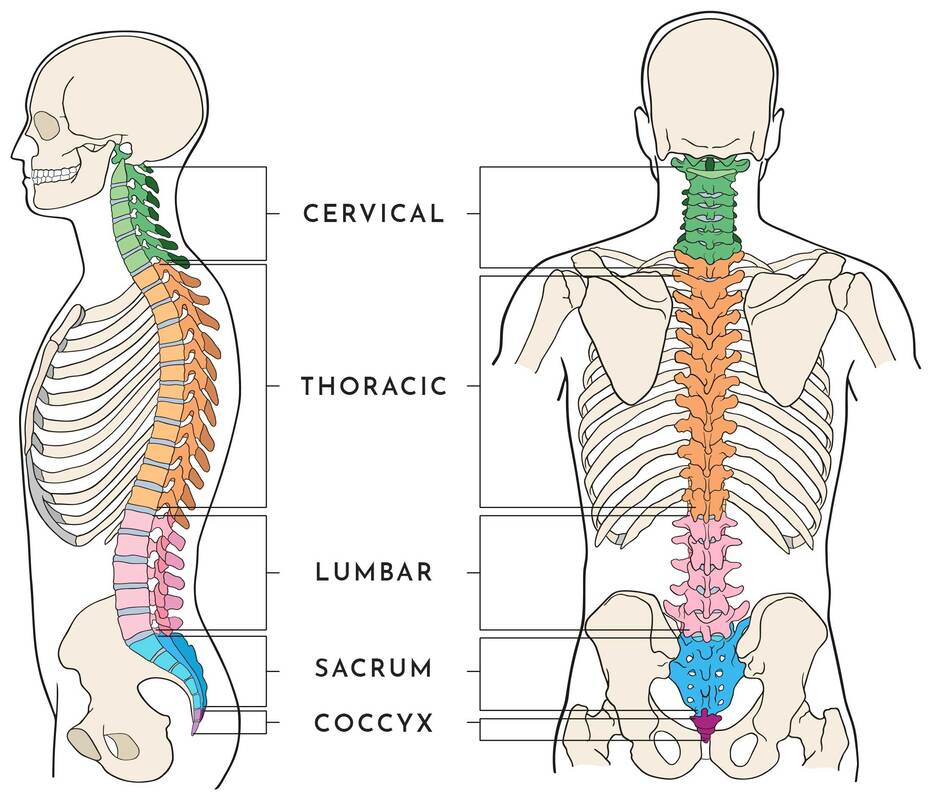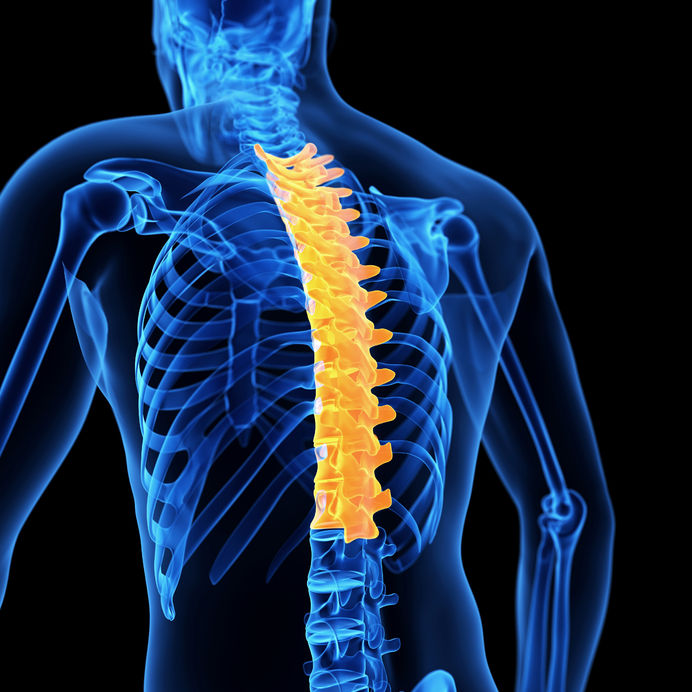 What is the thoracic spine? The spine is made of 5 different sections being the cervical, thoracic, lumbar, sacrum and coccyx. The thoracic spine starts at the bottom of the neck and ends at the abdomen and is the longest section of the entire spine. The thoracic spine consists of 12 vertebrae stacked on top of each, called T1 down to T12. These vertebrae support the neck, rib cage, connecting joints and soft tissues along with blood vessels and nerves. What is the Thoracic spine’s role in the body? The thoracic spine is crucial in supporting and stabilising the rib cage which protects all of our vital organs underneath, including our lungs and heart. It also protects the spinal cord which sends all messages and signals throughout the entire body. The spinal cord travels from the brain, down through the vertebrae before it branches off into smaller bundles in the lumbar portion of the spine. What kind of movement does it produce? The thoracic spine is not as mobile as the neck and lumbar spine and it is quite limited in forward and backward movements at the top vertebrae. Although the thoracic spine can produce more rotational movement within the top few vertebrae to help twist our chest and shoulders. Common causes of thoracic spine pain? There can be many possible causes for upper back/ thoracic pain but some of the most common include;
Common treatments Initially an increased range of movement through the thoracic spine is important to ensure that the spine can move freely without restriction. This may be done by lengthening out the muscles through the front of your chest and shoulders to enable a more upright posture to return. Increasing strength through the thoracic, lumbar and cervical spine will also assist in developing endurance to maintain an upright posture, preventing pain from returning in the future. Each case is assessed and treated individually to determine the best approach for each client. Aleisha Michael Accredited Exercise Physiologist.
1 Comment
Brenda Moore
1/7/2023 11:34:22 pm
thank you
Reply
Your comment will be posted after it is approved.
Leave a Reply. |
AuthorSLisa Parkinson Archives
July 2024
Categories
All
|


 RSS Feed
RSS Feed